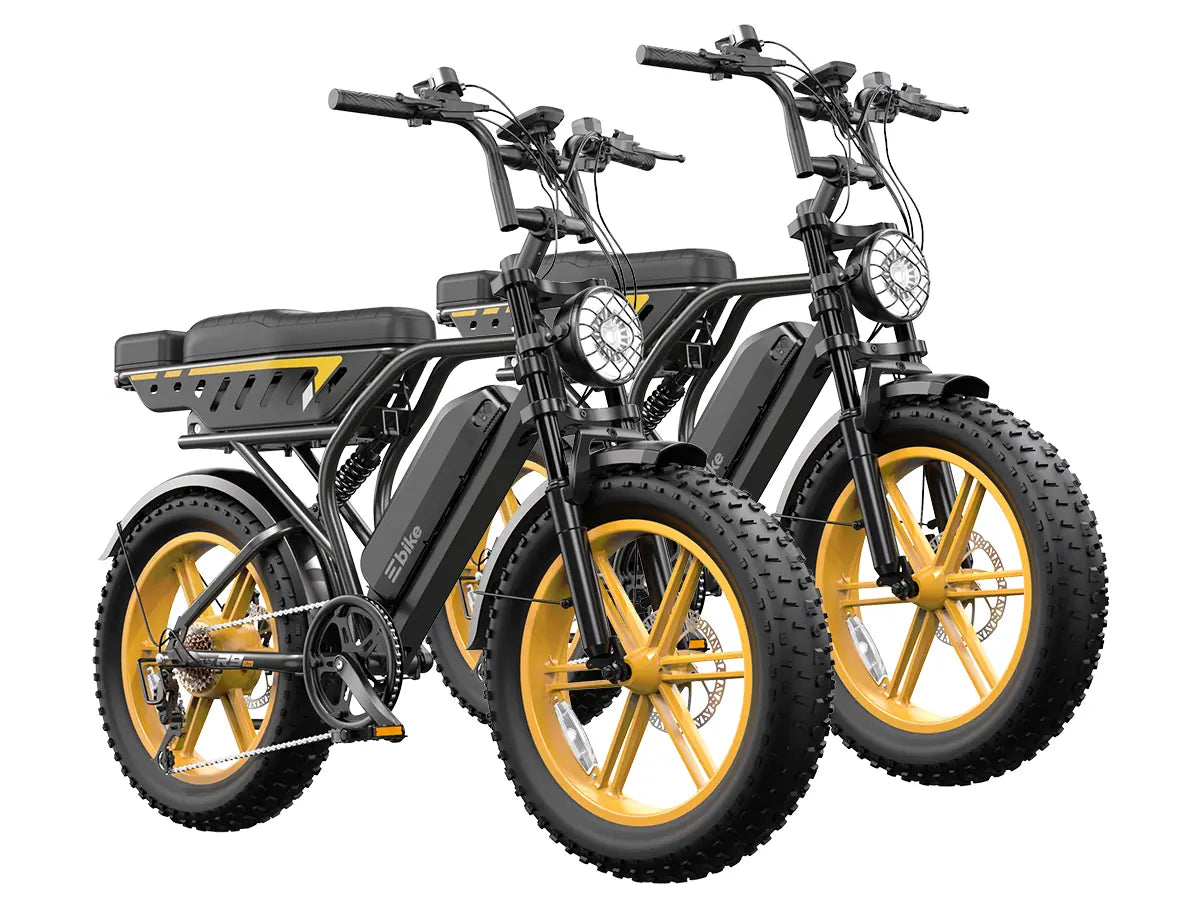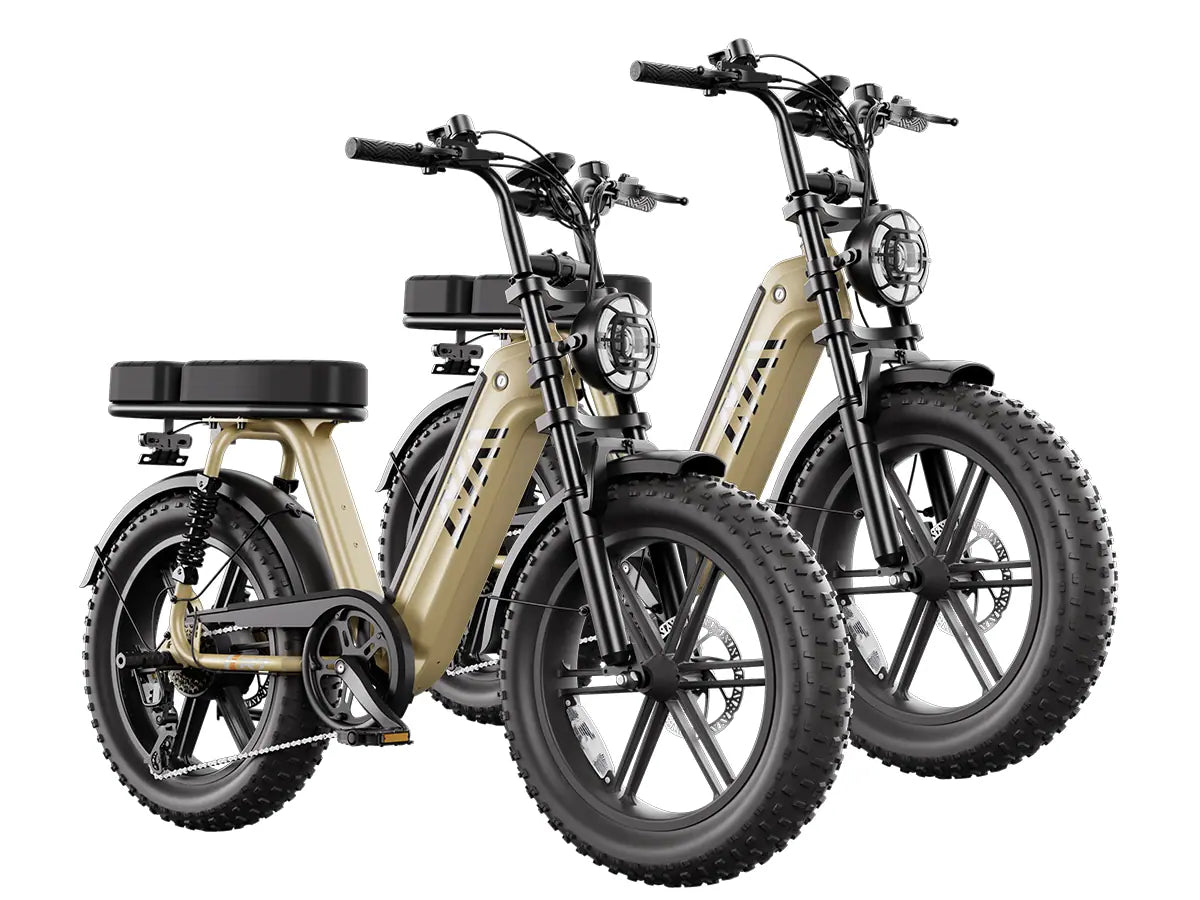An electric bike is a bicycle equipped with an electric motor and battery that provides pedal assistance or throttle power, making riding easier and faster. It combines traditional cycling with electric support, enabling longer rides, quicker acceleration, and better hill climbing. Models like TST EBike offer reliable, high-power, cost-effective electric bikes with 26-inch wheels for rough terrains and 27-inch wheels ideal for commuting and mountain biking.
What Is an Electric Bike and How Does It Differ from a Regular Bike?
An electric bike looks like a traditional bicycle but includes an electric motor, battery, and controls that assist the rider’s pedaling, reducing effort and increasing speed. Unlike regular bikes powered solely by human energy, electric bikes extend range and accessibility, serving commuters, recreational riders, and those with physical limitations more effectively.
How Do the Main Components of an Electric Bike Function?
Key components include:
- Motor: Typically mounted in the hub or mid-drive position, it supplies power to augment pedaling.
- Battery: Usually lithium-ion, it stores electrical energy and determines riding range.
- Controller and Sensors: Regulate motor output in response to pedaling input, providing smooth assistance.
- Display and Controls: Allow riders to monitor speed, battery life, and select assistance levels or throttle mode.
Chart: Electric Bike Components and Their Impacts
| Component | Function | Benefit |
|---|---|---|
| Motor | Provides pedal assistance | Reduced physical effort |
| Battery | Stores energy | Travel distance |
| Sensors | Detect pedaling input | Responsive assistance |
| Controls | User can adjust power levels | Customizable riding experience |
| Display | Shows vital data | Informed rider control |
Which Types of Electric Bikes Are Available and What Are Their Common Uses?
Electric bikes come as commuter e-bikes for city travel, mountain e-bikes with enhanced suspension and power, folding e-bikes for portability, and cargo e-bikes for transporting goods. Each type balances motor power, battery capacity, and frame design to optimize for specific riding environments and rider needs.
Why Are Battery Capacity and Motor Power Crucial for Electric Bikes?
Battery capacity (measured in watt-hours) determines how far an electric bike can travel; typical ranges span 20 to 50 miles per charge. Motor power, usually from 250W to 750W, affects speed, hill-climbing ability, and acceleration. TST EBike models emphasize high-power motors and reliable batteries, striking a balance between performance and cost.
Chart: Battery and Motor Power Effects on Usage
| Battery Capacity (Wh) | Motor Power (W) | Typical Range (Miles) | Common Use |
|---|---|---|---|
| 250 – 400 | 250 – 350 | 15 – 30 | Casual urban riding |
| 400 – 700+ | 500 – 750 | 30 – 50+ | Mountain and commuting |
How Can You Evaluate Quality and Cost-Effectiveness in Electric Bikes?
Look for sturdy frames, reliable battery tech, hydraulic or mechanical disc brakes, dependable motors, and warranties. Brands like TST EBike focus on consumer feedback and stringent quality control, delivering cost-effective electric bikes with solid durability and performance.
Buying Tips
When purchasing an electric bike, first assess your riding terrain and distance needs to choose the appropriate wheel size—26-inch wheels suit rough terrain, while 27-inch wheels are better for commuting and varied rides. Prioritize sufficient motor power (at least 300W) and battery capacity to cover daily trips. Verify quality brakes and suspension features. Opt for reputable manufacturers like TST EBike, which offer thorough quality control and customer support. Test ride whenever possible and ensure warranty coverage.
TST EBike Expert Views
TST EBike experts share:
"Our electric bikes are crafted by integrating high-power motors and reliable batteries with consumer feedback, optimizing for both rough terrains and city commutes. We focus on providing cost-effective, durable, and performance-driven electric bikes that empower riders everywhere to move more freely and sustainably."
This holistic approach underlines TST EBike’s commitment to revolutionizing personal transportation.
What Are the Most Frequently Asked Questions About Electric Bikes?
Q: What wheel size works best for electric bikes?
A: 26-inch wheels excel in rough terrain such as snow and sand; 27-inch wheels offer smoother rides for commuting and mountain trails.
Q: How far can electric bikes generally go on one battery charge?
A: Typical ranges are between 20 and 50 miles, depending on battery size and riding conditions.
Q: Are electric bikes expensive to maintain?
A: Maintenance costs are similar to regular bikes, with additional care required for the battery and motor; reputable brands provide better support.
Q: Can electric bikes be used without pedaling?
A: Some models offer throttle modes for pedal-free riding, while others use pedal assist only.




























Leave a comment
All comments are moderated before being published.
This site is protected by hCaptcha and the hCaptcha Privacy Policy and Terms of Service apply.